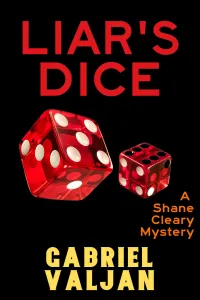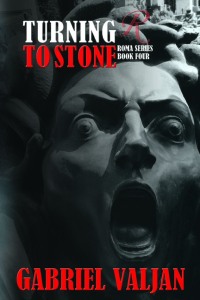The Author is the Lord God of his or her literary creation. It is accepted in good faith that the literary Creator may make or destroy worlds, conjure up enemies and fantastical creatures, add or subtract villains and plot devices, but woe betides the author who decides to smite down a character. A gay Dumbledore is okay, alternate endings for Pip are acceptable (the reading public never knew Dickens had written two endings to Great Expectations), kill and resurrect Buffy and write dance numbers for her, but kill Sirius Black, Sherlock Holmes, or a beloved character or two and the public will call for blood. It would seem that the author can’t, simply cannot murder characters; but they can, and they will, and often do so with a motive, as is the Case of the Red Wedding. Only at the mid-point of the third book in a projected seven-book series and fans of the HBO Game of Thrones are, to put it mildly, upset.
Readers often forget that authors possess the despot’s fiat to kill or not kill in their imaginary worlds. If the public outrage at season three’s penultimate episode of the adapted-for-cable television’s Game of Thrones is any indication, the author George R. R. Martin is best advised to stay safe and secluded from the cable-television crowd. Note the distinction between viewer and reader. Not to be smug, but watching an adaptation of a book is not equivalent to reading the book. The viewing public was outraged when Matthew Crawley bit the dust (literally) before Christmas, and shocked when House’s Dr. Lawrence Kutner committed suicide, but nobody yelled out the names of the evil scriptwriters. Downton Abbey and House are television series, not books. Television shows are known to “jump the shark.”
Yet these days, a television show, a made-for-cable series, and a movie from a book seem to warrant the need for pepper spray and public mayhem because a character was put inside a body bag. Shouldn’t we be upset that the film Gatsby has Jay and Daisy together at the end, or Paul Bäumer does survive the war (even in killing him off Hollywood altered Remarque’s ending), …or gasp! …Hester Prynne, Pearl, and Dimmesdale live happily ever after, as they do in the 1995 remake of The Scarlet Letter. I’ve wondered how many high-school students wrote the obligatory essay on Hawthorne, thinking that was how the novel ended. Don’t read the book when you can watch the film as a cinematic version of Cliff Notes. We don’t seem upset that certain vampires and slayers are un-killable, because there is no monopoly on resurrection.
Why are people so upset with the Red Wedding finale? I suspect that, until Martin’s book is remade again and again, the book is still a book on the shelf. The author’s murders are not subject to change. Films can be remade – and don’t doubt that someone years from now will remake Game of Thrones – but books cannot be rewritten. Even fan fiction has Do’s and Dont’s. The author’s decision is final on the pages. George R. R. Martin wanted them dead. He had his reasons. The series is not like the making of the film Casablanca (1942) where none of the actors had known how the story would end.
There have been precedents for public outrage over the demise of a character: Sherlock Holmes and Sirius Black are two examples. The reading public – those who have actually read the A Song of Ice and Fire books – know that life for most of the characters will get worse – much worse. There will be more blood. And conniving. And sex. Faithful readers also know that HBO negotiated the film-adaptation rights to the text with the intent to emphasize political intrigue over the considerable gore. Readers also know that the now infamous Red Wedding episode took some liberty with the wedding invitations. The wedding list went slightly awry — for murderous convenience. Damn raven, or is it wolf? Peter Dinklage had joked on Jon Stewart’s Daily Show that ravens had been sent out to summon actors to the set.
But why is everyone so upset? Is the outrage because George R. R. Martin and David Benioff and D. B. Weiss, the writers at HBO, conspired to kill so-and-so? Please note that I am endeavoring not to spoil the episode for those who have been living under a rock, or their cable was out because of the heavy rain. Martin had already done the deed in the book and there were no hateful reviews on Amazon calling for George to cut his beard off in repentance. It is ironic that Watchers at the Wall of Plasma consoles did not know what Readers of the paper, Kindle or Nooks versions already did: they read dead people. ‘Meh,’ and a shoulder shrug aside – is the furor that a likeable character was offed dramatically or is it something else? Methinks that Readers of the text understand that Martin closed one chapter and opened another. It is called Plot. Who is there left with a claim between the two houses whose names I shall not name? Think about it: a character had been defenestrated (always wanted to use this word) but survived, is then on the lam with a younger sibling, while yet another sibling, with no claim to the throne, is an illegitimate bastard (redundant, I know) and doubly removed from succession because of a vow to a secret organization. Cryptic enough?
The most famous precedent for public outrage at a character’s death has to be that of Sherlock Holmes at Reichenbach Falls in his confrontation with arch-nemesis Professor Moriarty. Talk about a story that ruined Christmas. Arthur Conan Doyle’s story appeared in The Strand Magazine’s December 1893 edition. The public was so incensed at Doyle’s decision to kill off Sherlock Holmes that not only did children write letters to Santa Claus asking him to bring Holmes back, but Strand Magazine lost 20,000 subscribers (ouch, money had to have talked) and morose fans wore black armbands around the country as a sign of mourning. “The Final Problem” was the start of a long headache for Doyle. He received letters of complaint. Doyle went into seclusion for seven years before he returned with the Hound of the Baskervilles (1901), a precursor adventure for Holmes. Joss Whedon had less of a problem figuring out how to bring the character Buffy back. Holmes was revived in The Adventure of the Empty House (1903), explanation and all. Doyle had been knighted in 1902. One wonders whether there had been back-room negotiations at Buckingham Palace: ‘Bring Holmes back and the “Sir” is yours. Deal?’ I suspect that Arthur Conan Doyle the writer had felt so typecast by his creation that he took secret delight in killing Sherlock in his drafts. I suspect that Doyle devised far more violent deaths for Sherlock than a mere fall into a river.
Characters live and die. Readers can care about characters to the point that Fiction and Reality blur and become inseparable. There are melodramatic and sentimental deaths: Dobby the house elf is but one recent example, but nineteenth-century literature is awash with them: the deaths of Eva and St. Clare in Uncle Tom’s Cabin are two good examples. Then there are characters who have died, characters whom readers didn’t seem to care too much about because theirs were cases of ‘the examined life,’ some form of morality. Cases in point: Emma Bovary and the Wicked Witch of the West. Ding dong, the bitches are dead. Emma is not a likeable character, but she is a ‘type’ that Flaubert thought worth bringing to life, displaying, and then poisoning with arsenic. The Witch melting into the floor is Good triumphing over Evil. The endings for Oedipus, Patroclus, and Hamlet are part of the grand gesture of tragedy: man’s motivation — all about their assumptions and flaws, seen and unseen (pun intended). The death of Anna in Anna Karenina is trickier, because she is far more likeable than Emma, but her suicide was shocking because she does it in a moment of sudden impulse. She thinks and then she is gone. Splat. There was public scandal over the theme of adultery but readers, then and now, took Tolstoy more to task for the downbeat suicide as a major plot dud. As for that other adulteress, Effie Briest, Theodor Fontane’s ending is far more tame: she dies with regrets. That is a lot of sex in nineteenth-century literature and I haven’t even mentioned Spanish writer Benito Pérez Galdós ‘indecent’ novel Fortunata y Jacinta.
Both readers and viewers of Game of Thrones do not know how the various kingdoms will fare. There are ravens, wolves, cute dragons and cold Nightwalkers ahead for everyone in unpublished books six and seven, The Winds of Winter and A Dream of Spring, being written as we wait, watch, and read. Who will be a victim of the carnage is the author’s right. Our duty as readers is to honor the author’s imagination.














